Looking to start selling on Amazon? Or maybe you’re already an Amazon seller, but want to take your business to the next level?
In either case, it’s important carry out Amazon competitor analysis.
This will help you understand who your biggest competitors are, what products they’re selling, and how they’re pricing them.
You can learn what strategies they’re using to succeed and adopt similar tactics yourself.
In this article, I’ll discuss how to conduct a competitor analysis for Amazon sellers.
I’ll cover the different methods you can use to gather information about your competitors, as well as how to analyze that data and make strategic decisions based on what you find.
Let’s get started!
What Is an Amazon Seller Competitor Analysis?

Competitor analysis on Amazon is the process of studying your competitors’ business strategies and tactics in order to improve your own marketing efforts.
It involves examining your competitor’s products, prices, marketing channels, and other key metrics in order to gain a better understanding of their strengths and weaknesses.
You can also find out aspects in which your competitors’ businesses are lacking by conducting a business analysis of them.
By reading their customer reviews, you may be able to identify gaps or weaknesses in their Amazon business that your business can address.
You’ll have something to strive for if you gauge your competitors’ success. After conducting a competitive analysis, you should be aware of who you need to exceed and how to accomplish it.
It is not considered to be a proper competitive analysis simply skim over your competitors social media accounts and websites.
You will have to go further in order to gather accurate and useful information.
How To Do Competitor Analysis On Amazon
There are a few steps you need to take in order to properly analyze your competitors on Amazon:
Step #1: Know Your Goals
Without having a specific goal in mind, it’ll be difficult to properly analyze your competitors.
Are you looking to improve your product listings? Increase organic traffic to your product pages? Boost your conversion rate? Remain competitive? Or something else entirely?
Keep your goals front and center as you conduct your analysis, and make sure the data you collect is relevant to achieving those objectives.
Step #2: Carry Out Keyword Research

Before you can start analyzing your competitors, you need to know which keywords they’re targeting. The words consumers are most likely to look for when they browse through Amazon will be your target keywords.
Although you can determine keywords based on intuition, it is much wiser to carry out research to obtain a comprehensive list of the phrases you should be focusing on.
There are a few different ways to go about this:
– Use Amazon’s search bar and look at the autocomplete suggestions for products customers search
– Look at the competitors product listings for products similar to yours
– Use a keyword research tool like Keyword on Fire or Cerebro.
Once you have a list of relevant keywords, you can start to look at how your competitors are using them.
Step #3: Identify Your Competitors
Competition from Amazon sellers of comparable products ought to be among your top priorities when undertaking research on your own products for your Amazon business.
You need to identify who your biggest competitors are on Amazon.
A good place to start is by looking at the products that are similar to yours and see who ranks for your target keywords.
The competition will be fierce for broader search terms, but as you narrow your emphasis and become more particular, the volume of your direct competitors will decline. Focus on these competitors.
For example, if you are selling protein bars, a direct competitor would be another seller of protein bars.
Another way sellers identify competitors is by looking at who is selling products in the same Amazon category as you.
To do this, go to Amazon and log into your account. Then, click on “Seller Central” and select “Manage Inventory.”

Image Source: sellercentral.amazon.com
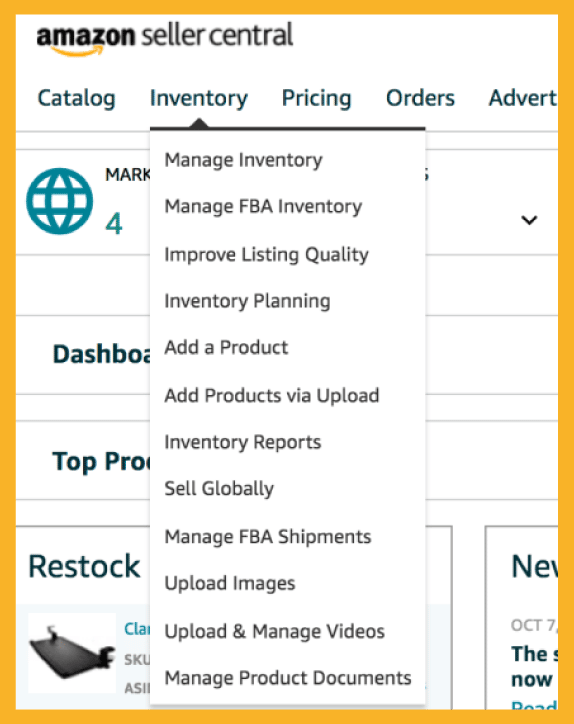
Image Source: sellercentral.amazon.com
From there, click on the product you want to list and scroll down to the section labeled “Product Categories.” Here, you’ll see a list of all the categories your product is in.
You can also look at Amazon’s “Customers Who Bought This Item Also Bought” section to get ideas.
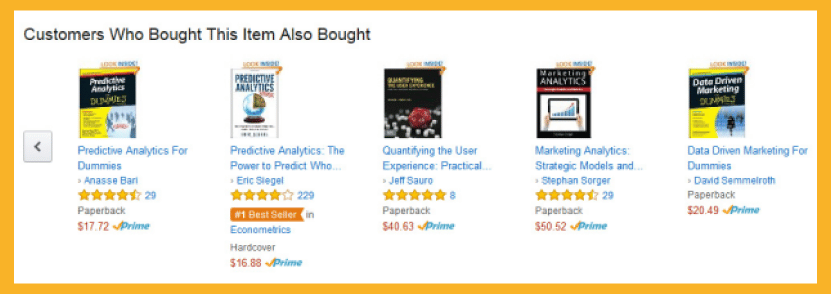
Image Source: Amazon.com
Keep in mind that because there are probably thousands of competitor’s products, it is not necessary to look through them all. The seller products that appear at the top of search results are the ones you need to concentrate on.
Step #4: Analyze Your Competitors
Now that you know your goals and have identified your competitors, it’s time to start analyzing them.
When you’re looking at a competitor’s listing, there are a few things you should pay attention to. These include:
Product Title
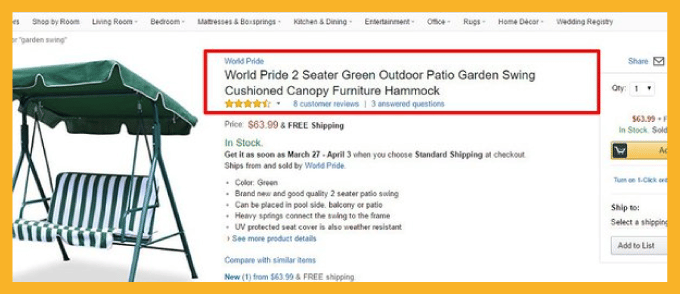
Image Source: Amazon.com
The product title is one of the most important aspects of a listing. It’s the first thing potential customers will see, so it needs to be attention-grabbing and relevant.
Your competitor’s product title should give you an idea of the primary keywords they’re targeting and competitors keyword strategies.
It should also be clear and concise without being too long or crammed with too many competitor’s keywords.
Here’s a full guide on writing your product title.
Product Description
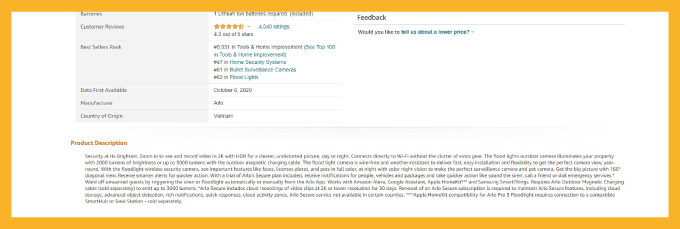
Image Source: Amazon.com
The product description is where sellers can really sell products. This is your chance to show potential customers why your product is the better choice.
When you’re looking at a competitor’s product description, pay attention to the length, style, and tone. Is it engaging? Does it highlight the product’s features and benefits? Does it include the same keywords?
Product Images
Images are just as important as the product title and description. They give potential customers a visual of the product, and can be the deciding factor in whether or not someone buys it.
When you’re looking at a competitor’s product images, pay attention to the product’s quality and number of photos.
Are they clear and professional in their enhanced brand content? Do they show the product from different angles? Take some tips when you feature product images of your own.
Bullet Points
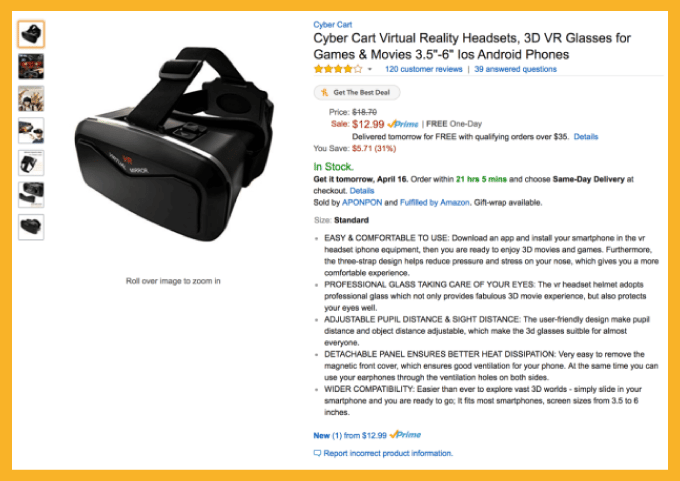
Image Source: Amazon.com
The bullet points are another important part of a listing. They highlight the product’s key features and give potential customers more information about what they’re buying.
When you’re looking at a competitor brands bullet points, pay attention to the number of points and the information they include. Are the points clear and concise? Do they highlight the product’s best features?
Remove any filler words and sentences that aren’t helpful to your customer. Keep your information concise and compelling, highlighting the most crucial selling points.
The more quickly a buyer can obtain the information they need, the more likely they will feel persuaded to buy your item.
Customer Reviews
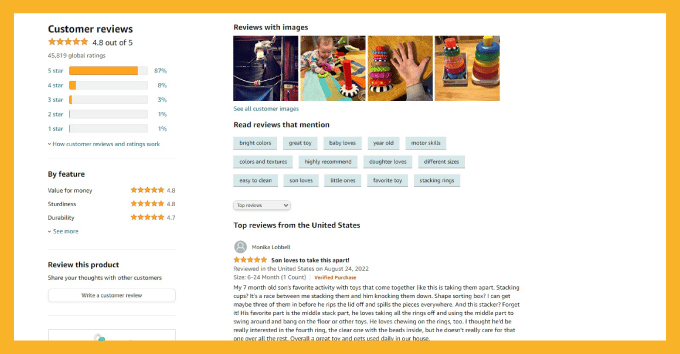
Image Source: Amazon.com
When looking at your competitors, pay attention to the reviews. How many reviews do they have? Are they mostly positive or negative? What do customers like and dislike about the product?
The reviews will give you an idea of what customers are looking for and how your product can be improved.
If a competitor has mostly positive reviews, that’s a good sign that they’re providing a quality product. If they have mostly negative reviews, that’s a sign that you may be able to improve upon their product.
Customer Questions and Answers (Q&A’s)
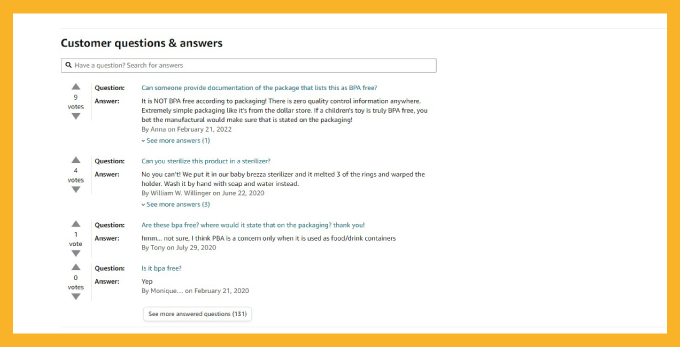
Image Source: Amazon.com
The questions and answers section is a great place to see what potential customers are looking for. This is also a good place to address any concerns they may have.
When you’re looking at a competitor’s questions and answers, pay attention to the tone and type of questions being asked. Are they mostly positive or negative? What do customers want to know about the product?
Prices
Of course, you’ll also want to pay attention to prices. Are your competitor’s prices higher or lower than yours? What are customers willing to pay for this product? What is their pricing strategy?
You’ll want to make sure you’re priced competitively, but you also don’t want to sacrifice quality or features. Set competitive prices for your products instead of setting the lowest prices compared to all the sellers.
Competitors Amazon Ad Campaigns
You should also take a look at your competitor’s advertisement campaigns. Are there sellers Amazon ad campaigns? What about the Google shopping ads section? What keywords are they targeting?
Ad campaigns can be a great way to get your product in front of potential customers. If you see competitors ad campaigns, it’s worth considering running an ad campaign of your own.
Website and Social Media
When you’re doing Amazon competitor analysis, it’s important to look at all aspects of their business, not just doing their Amazon product listing audit.
In addition to Amazon, you should also take a look at your competitor’s website and social media platforms. What kind of presence do they have? How are they promoting their product?
You may be able to get some ideas for how to promote your own product by looking at what your competitors are doing.
Step #5: Look At Your Competitors’ Sales History
If you want to get an idea of how well your competitors are selling, you can look at their monthly sales history. Amazon keeps track of this information, and you can see how many units a competitor has sold over a period of time.
This information can be helpful in two ways. First, it can give you an idea of how popular the product is. Second, it can give you an idea of how well your competitor is selling.
If you see that a competitor is selling a lot of units, that’s a good sign that their product is in demand. This means it can be a viable product for you to sell.
Step #6: Use the Information You Have Gathered
Now that you’ve gathered all this information, it’s time to put it to use.
Use the information you’ve learned to improve your own listing. Make sure your product is priced competitively, has quality photos, and compelling copy.
By carrying Amazon competitor research, you can learn a lot about your market and what customers are looking for. After all, you have a similar or same audience.
Use this information to improve your own listing and make sure you’re offering a quality product that meets customer needs.
Using Software For Amazon Competitors Analysis
In addition to the methods we’ve mentioned, you can also use software to help you with your Amazon competitor analysis. There are a few different software options to help you gain information about many competitor brands.
The top Amazon analytics software options include:
ZonGuru Keywords on Fire
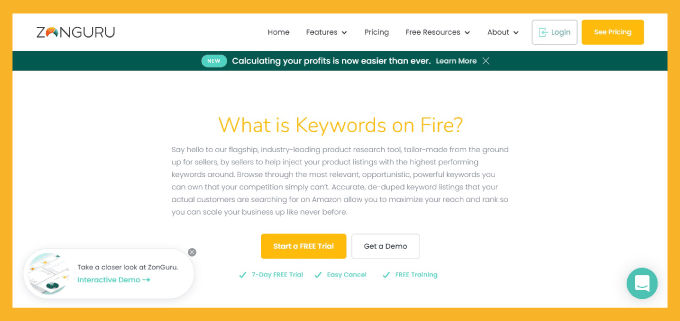
ZonGuru is a tool you ought to be paying closer attention to if you need a strong all-in-one solution that goes above and beyond simple product research.
To help you optimize your product listings with the best-performing keywords available, they offer Keywords on Fire, a pioneering product research tool was specifically created for and by sellers.
This tool allows you to see the most pertinent, advantageous, and effective terms you can control that your competitors can’t.
There are a ton of standard capabilities available with this application, including analysis of PPC campaigns, listing SEO, keyword monitoring and research, and index checking.
These capabilities allow you to study product data from a variety of perspectives, including competitor intensity analysis and data tracking as well as monthly sales potential and revenue.
Helium10 Cerebro
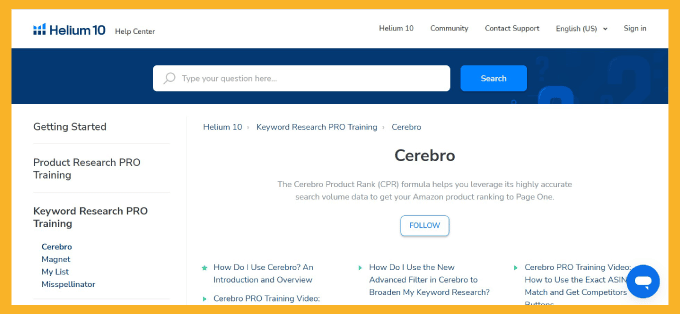
Utilizing its incredibly precise search volume data, the Cerebro Product Rank (CPR) methodology enables you to move your Amazon product ranking to the first few pages.
It aids in getting insight to your competitors targeted keywords and understanding the competitors keyword strategy fast. Amazon’s algorithms prefer products that have the most relevant keywords.
You will see the options for one-click quick filters at the top of the Filters section while examining numerous ASINs in Cerebro.
To save time, the filters are automatically filled up when you choose one of these choices. If you wish to make any changes, you can edit the filters as usual to see your competitor’s keyword choice.
Frequently Asked Questions (FAQs)
How do I run a competitor analysis on Amazon?
There are a few different ways you can run Amazon competitors analysis. You can look at their product listing, reviews, questions and answers, prices, competitor’s ad campaigns, other sellers websites and social media presence, and sales history.
You can also use software to help you gather information about your competitors. By doing a An Amazon competitive analysis, you can learn a lot about your market and what customers are looking for.
Use this information to improve your own listing and make sure you’re offering a quality product that meets customer needs.
What is Amazon’s competitive advantage for a seller?
Amazon has a few different competitive advantages for sellers. One is that they have a large customer base.
They also have a lot of data that they can use to help sellers improve their listings and sell more products.
In addition, Amazon has a good reputation and is trusted by customers. This can give sellers an advantage over other platforms where customers may be less trusting.
Finally, Amazon offers seller tools and services that can help sellers run their business more effectively. Using their ads when running Google shopping ads boosts sales.
These free tools and services can give sellers an advantage over competitors who don’t have access to them. Overall, these competitive advantages can help sellers be successful on Amazon.
What is the difference between a market analysis and a competitor analysis?
A market analysis looks at the overall market for a product or service. This includes things like the size of the market, growth rate, trends, and customer needs. It helps understand the target market.
Competition analysis looks at specific companies that are selling a product or service in the market. This includes things like their prices, keyword strategy, product offerings, marketing strategies, sales history, and how much inventory they maintain.
By doing a market analysis, you can get an idea of the overall opportunity in the market. By doing an Amazon competitor analysis, you can learn about specific companies and how to better compete against them.
Conclusion
When you’re selling on Amazon, it’s important to keep an eye on your competition by conducting Amazon competitor analysis.
By following the steps outlined in this guide, you can create a comprehensive competitor analysis that will help you identify areas where you can improve.
Just remember to keep your focus on your goals as you analyze competing sellers, and don’t get discouraged if you see that a competitor is doing better than you in some areas.
Now that you know what to look for, you can start analyzing your competitors.




